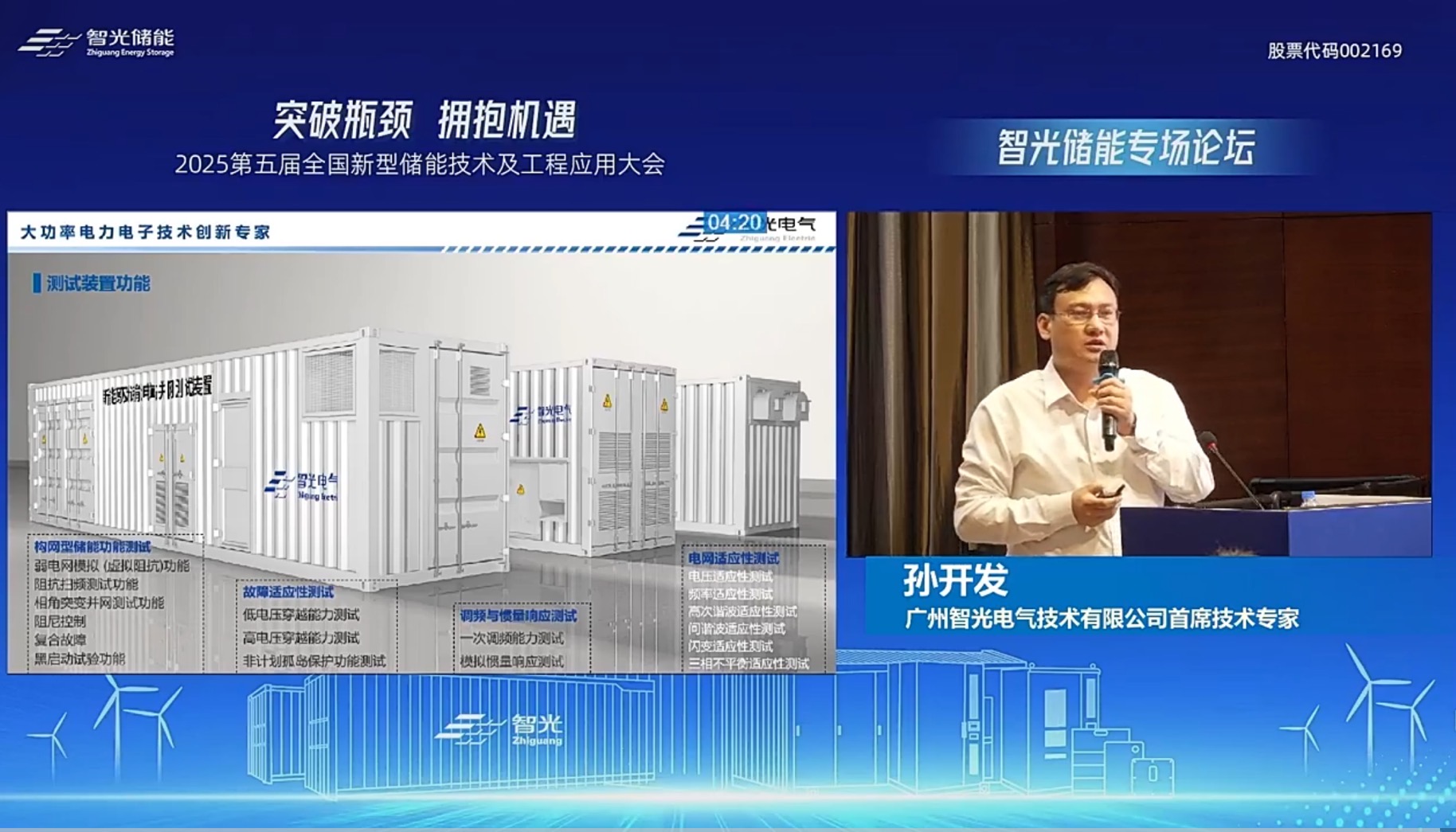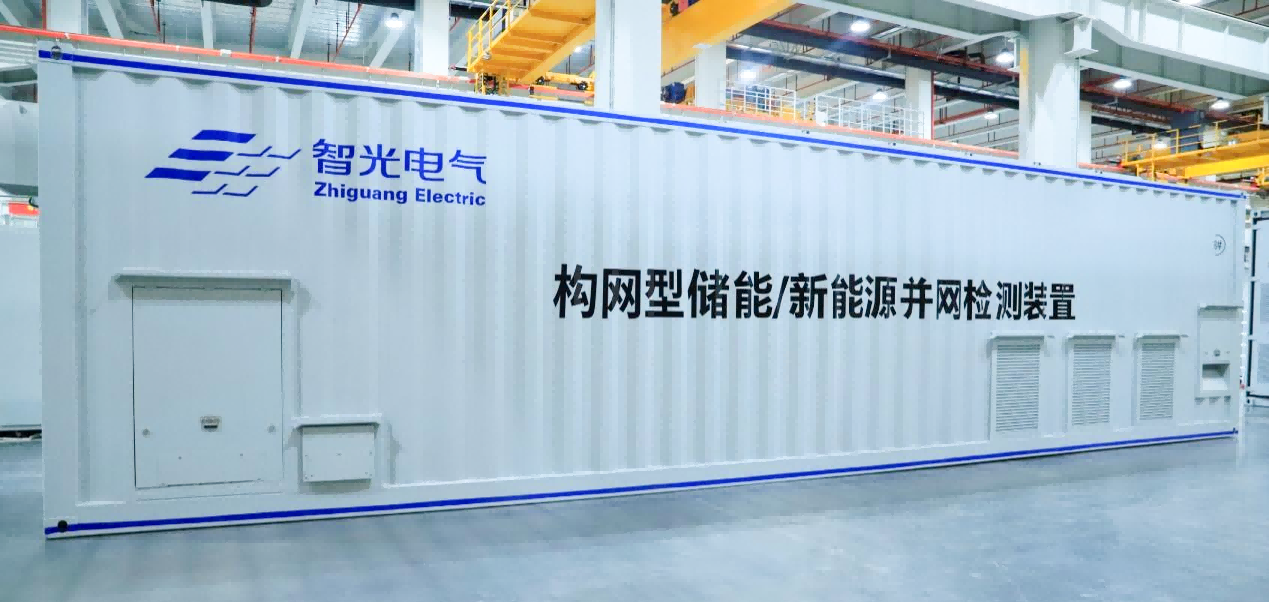100+ Power Plant Verifications! How Zhiguang’s Mobile Testing Device Manages Grid-forming Energy Storage Systems
On July 25, at the “2025 National Flow Battery Industry Development Conference and the 5th National Conference on New Energy Storage Technologies and Engineering Applications” held in Chengdu, Zhiguang Energy Storage hosted a dedicated forum. During the event, Mr. Sun Kaifa, Chief Technical Expert of Guangzhou Zhiguang Electric Technology Co., Ltd. (hereinafter referred to as “Zhiguang Electric Technology”), delivered a keynote speech titled “Mobile Grid-forming Energy Storage Grid-connection Testing Device.”

Mr. Sun provided an in-depth analysis of the core value and grid-connection challenges of grid-forming energy storage technology in the context of the evolving power system. He highlighted the innovative practices and application results of the mobile grid-forming testing device independently developed by Zhiguang Electric Technology, focusing on its role in ensuring safe grid integration and validating key performance metrics.
Sun emphasized that as China’s new energy storage installation capacity grows rapidly, new energy sources are becoming the main power supply. However, the power system, dominated by power electronic converters, exhibits characteristics such as low inertia, low damping, and weak voltage support. These traits often lead to incidents like energy storage system disconnection or oscillations during grid faults, posing serious risks to system security.
To address this, Sun proposed establishing a comprehensive testing and evaluation system encompassing real-world engineering tests, simulation assessments, and data analysis across converters, systems, and power stations. He particularly stressed the irreplaceable role of on-site testing in verifying actual performance, identifying potential issues, and ensuring long-term reliable operation.
The highlight of the speech was a detailed introduction of the mobile grid-forming energy storage grid-connection testing device.

This device uses a high-capacity four-quadrant variable frequency power supply as its core component. It precisely controls output voltage magnitude, frequency, and phase to simulate various grid operating conditions, including faults and complex disturbances, enabling comprehensive testing of energy storage systems and new energy power plants.
Key testing capabilities include:
Grid Adaptability Testing: Adaptability to voltage, frequency, higher-order harmonics, interharmonics, flicker, and three-phase imbalance.
Fault Ride-through Testing: High/low voltage ride-through (symmetrical, two-phase, and single-phase faults), and unintentional islanding protection functionality.
Frequency Regulation and Inertia Response Testing: Primary frequency control (including characteristics, dead band, and AGC lock logic) and simulated inertia response.
Special Grid-forming Function Testing: Weak grid simulation (virtual impedance), impedance sweep frequency testing, synchronization during phase-angle jumps, black start testing, and damping control capability testing.
To date, the device has been used to conduct grid-connection tests for new energy and energy storage systems across Guangdong, Hunan, Henan, Hebei, Fujian, Yunnan, Chongqing, Shandong, and Ningxia, among other provinces. It has been successfully applied in numerous key projects, supporting innovative tests such as “China’s first fault ride-through test with controllable phase-angle jumps on a new energy unit”, generating significant economic benefits for related projects.

As grid-forming energy storage technology continues to develop and standards improve, the demand for advanced grid-connection testing will keep rising. Zhiguang Electric Technology remains committed to advancing high-power power electronics, driving innovation to optimize its testing systems. Through a comprehensive quality assurance strategy, Zhiguang aims to support the efficient and stable grid integration of new energy storage and power generation systems—helping build a more resilient, intelligent grid and accelerating the green energy transition.